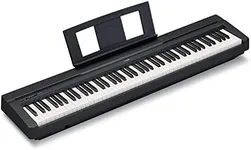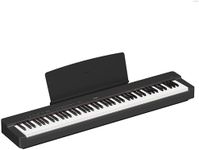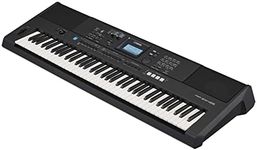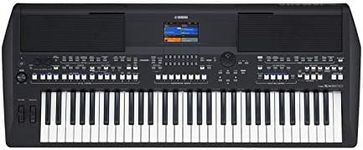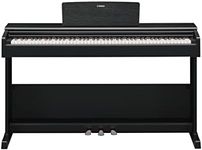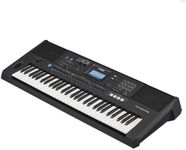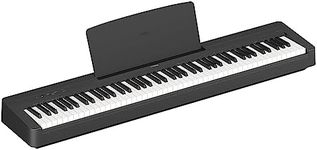Buying Guide for the Best Yamaha Digital Pianos
Choosing the right Yamaha digital piano can be a rewarding experience if you know what to look for. Digital pianos are a great alternative to acoustic pianos, offering a range of features that can suit different playing styles and needs. When selecting a digital piano, consider your skill level, the type of music you want to play, and where you will be using the piano. Here are some key specifications to help you make an informed decision.Keyboard ActionKeyboard action refers to how the keys respond when you press them. This is important because it affects the feel and playability of the piano. Yamaha digital pianos typically offer different types of keyboard actions such as Graded Hammer Standard (GHS), Graded Hammer 3 (GH3), and Natural Wood (NWX). GHS is suitable for beginners as it mimics the feel of an acoustic piano but is lighter. GH3 offers a more realistic feel and is ideal for intermediate players. NWX provides the most authentic experience, perfect for advanced players who want the closest feel to a grand piano.
Sound QualitySound quality is determined by the piano's sound engine and the samples used. Yamaha digital pianos often use technologies like Pure CF Sound Engine or CFX and Bösendorfer samples. The Pure CF Sound Engine is great for beginners and intermediate players, offering high-quality sound at an affordable price. The CFX and Bösendorfer samples are top-tier, providing rich, detailed sound that is perfect for advanced players and professionals. Consider what level of sound quality you need based on your playing style and performance requirements.
PolyphonyPolyphony refers to the number of notes a digital piano can produce at once. This is crucial for complex pieces and for using the sustain pedal. Entry-level models may offer 64-note polyphony, which is sufficient for beginners. Intermediate players might prefer 128-note polyphony to handle more complex compositions. Advanced players and professionals should look for 256-note polyphony to ensure no notes are cut off during intricate performances.
ConnectivityConnectivity options allow you to connect your digital piano to other devices, such as computers, tablets, and external speakers. Common connectivity features include USB to Host, USB to Device, and MIDI. USB to Host is useful for connecting to music software on your computer, while USB to Device allows you to save and transfer your performances. MIDI connectivity is essential for integrating with other musical equipment. Choose a model with the connectivity options that match your needs, whether for recording, composing, or performing.
Built-in FeaturesBuilt-in features can enhance your playing experience and provide additional learning tools. These may include metronomes, recording capabilities, lesson functions, and various instrument voices. Beginners might benefit from lesson functions and a variety of instrument voices to explore different sounds. Intermediate players may appreciate recording capabilities to track their progress. Advanced players might look for more sophisticated features like split and layer functions for more complex performances. Consider which features will support your learning and playing goals.
PortabilityPortability is an important factor if you plan to move your digital piano frequently or have limited space. Portable models are lighter and more compact, making them ideal for students, gigging musicians, or those with small living spaces. However, they may have fewer features compared to console models, which are larger and designed to stay in one place. Console models often offer better sound quality and more advanced features, making them suitable for home use and serious practice. Decide based on your lifestyle and how you plan to use the piano.
